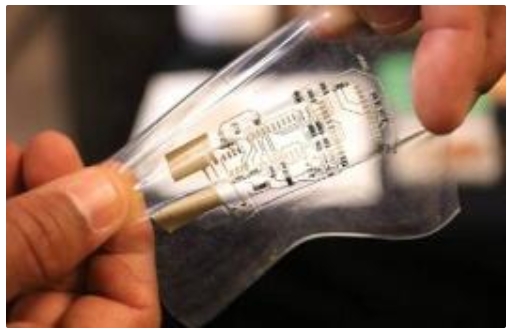- 06
- Oct
Properties and selection methods of flexible circuit board manufacturing materials
Properties and selection methods of flexible circuit board manufacturing materials
(1) FPC substrate
Polyimide is commonly used as the material of flexible circuit board, which is a high temperature resistant and high strength polymer material. It is a polymer material invented by DuPont. The polyimide produced by DuPont is called Kapton. In addition, you can also buy some polyimides produced in Japan, which are cheaper than DuPont.
It can withstand a temperature of 400 ℃ for 10 seconds and has a tensile strength of 15000-30000 psi.
twenty-five μ M thick FPC substrate is the cheapest and most widely used. If the flexible circuit board needs to be harder, 50 should be selected μ M base material. On the contrary, if the flexible circuit board needs to be softer, select 13 μ M base material.

Properties and selection methods of flexible circuit board manufacturing materials
(2) Transparent adhesive for FPC substrate
It is divided into epoxy resin and polyethylene, both of which are thermosetting adhesives. The strength of polyethylene is relatively low. If you want the circuit board to be soft, choose polyethylene.
The thicker the substrate and the transparent adhesive on it, the harder the circuit board. If the circuit board has a large bending area, a thinner substrate and transparent adhesive should be selected as far as possible to reduce the stress on the surface of the copper foil, so that the chance of micro cracks in the copper foil is relatively small. Of course, for such areas, single-layer boards should be selected as far as possible.
(3) FPC copper foil
It is divided into calendered copper and electrolytic copper. Calendered copper has high strength and bending resistance, but the price is expensive. Electrolytic copper is much cheaper, but it has poor strength and is easy to break. It is generally used in occasions with few bends.
The thickness of copper foil shall be selected according to the minimum width and minimum spacing of leads. The thinner the copper foil, the smaller the minimum width and spacing that can be achieved.
When selecting calendered copper, pay attention to the calendering direction of copper foil. The calendering direction of copper foil shall be consistent with the main bending direction of circuit board.
(4) Protective film and transparent adhesive thereof
Similarly, 25 μ M protective film will make the flexible circuit board harder, but the price is cheaper. For the circuit board with large bending, it is best to select 13 μ M protective film.
Transparent adhesive is also divided into epoxy resin and polyethylene. The circuit board using epoxy resin is relatively hard. After hot pressing, some transparent adhesive will be extruded from the edge of the protective film. If the pad size is larger than the opening size of the protective film, the extruded adhesive will reduce the pad size and cause irregular edges. At this time, 13 should be selected as far as possible μ M thick transparent adhesive.
(5) Pad coating
For the circuit board with large bending and part of the pad exposed, the electroplated nickel + electroless gold plating layer shall be adopted, and the nickel layer shall be as thin as possible: 0.5-2 μ m. Chemical gold layer 0.05-0.1 μ m。
